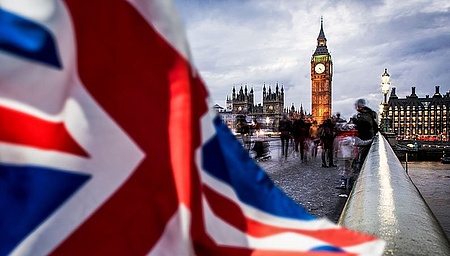
The ultimate crash course on protecting Intellectual Property
Early on in a business's life cycle, you may not have concerns more urgent than keeping operations on track and maintaining a reasonably steady cash flow. Nevertheless, before you find some stability by developing and selling a product or service that meets a unique demand, you must think strategically and do so with the long term in mind. Establishing legal protection early on is pivotal for your company's inventions, methods, processes and branding.
At Dennemeyer, we understand every nuance of Intellectual Property, but we are equally appreciative of the concept's complexity. So we have put together the following crash course on how to protect your Intellectual Property assets, following industry standards and multiple jurisdictions' laws.

Why is it essential to protect your IP?
Your IP — including blueprints, artistic representations, and other information regarding your products, services, publications and branding — is your organization's lifeblood. Without it, those assets would simply not exist because you would have no incentive to create them in the first place.
If IP in business were free for the taking, overall competition among different companies in the same field would be severely limited. It would ultimately be dependent on mundane factors, like marketing and distribution budgets. Moreover, businesses and individual authors alike would get stuck and feel no pressure to create something new; similarly, in the patent field, thousands of the most notable technological advancements of the last century might not have come to pass. The stakes may not be as high for trademarks, but they are still immensely important because of how they express your brand's identity.
What are the four primary types of IP?
As noted above, IP is a complex category, and like a chameleon, it has many permutations. However, when first approaching these concepts, it is best to start with the four most well-known IP rights:
1. Patent: This right acknowledges its holder as the inventor and it covers a novel machine, manufactured object, technological or industrial process or chemical composition.- Like many other IP rights, patents are published in country-specific databases and international libraries like PATENTSCOPE, maintained by the World Intellectual Property Organization (WIPO).
2. Trademark: Logos, identifying marks, catchphrases, symbols and company or product names are protectable as trademarks.
3. Copyright: Unlike the strictly practical applications of items protected by patents, copyright is typically awarded to works representing "artistic, literary or dramatic expression" of the author— novels, films, songs and so on.
- There can be some points of confusion here. A business that produced a written report analyzing its industry as a whole could copyright that work in principle, or at least do so in Europe under the terms of the Database Directive. Still, there is no technical or innovative effect involved, so patent law would not apply despite its practical purpose.
- Along similar lines, while an inventor's blueprints and an architect's drawings are relatively similar in appearance and function, the former would be part of a patent, whereas the builder would copyright their art.
4. Trade secret: This is a sui generis right and refers to essential information regarding a company's products, services, or processes not published in any forum.
A quick look at Coca-Cola, arguably one of the most well-known soft drinks, affords examples of all four primary IP classifications. The name of the company and its flagship product are registered trademarks. However, the formula is not patented because it has been kept as a trade secret for more than 130 years. Other soda companies have created a plethora of similar products to compete by determining most of the original product's ingredients. But Coca-Cola's first-to-market advantage and inimitable instinct for branding — through countless iconic advertising campaigns, the art of which is copyright-protected — have kept it relevant for more than a century.

Nevertheless, as trade secrets might not be protected as sui generis rights under some country's laws, you would have to draft and sign confidentiality and non-disclosure agreements (NDAs) preemptively. If such clauses are violated, you have the right to sue in civil court, but there is considerably less guarantee of victory in the absence of written laws. This is why pursuing traditional IP protections is the wisest course of action in nearly all cases — anomalies like Coca-Cola are merely the exceptions that prove the rule.
How do you determine which type of IP protection is right for your needs?
An absolute must: the legal protection you seek should be appropriate for the creation you wish to safeguard. Sometimes it is hard to navigate the subcategories of patent and trademark laws in foreign jurisdictions.
- Patent requirements are most strict in this regard. Under the laws of most countries, inventors must provide:
- Evidence of a patentable creation's novelty, outlining how its ideation involved a leap of logic commonly known as the "inventive step" and prove that despite the invention's "non-obviousness," its use could be grasped by someone with a basic understanding of the medium, (a.k.a. "ordinary skill in the art").
- Trademarks and service marks are not explicitly required to be unique; if they were, you would see far fewer similar company logos and name designs globally.
- What these marks must do above all else is distinguish the goods or services of one organization from another. In addition to catchphrases, logos and brand names, unique designs of letters, numbers, package designs and even sounds can now be registered as marks.
- While it is best from a marketing perspective to have unique and striking marks, a trademark similar to that of another entity could still potentially be protected as long as the following things happen: The two organizations offered completely unrelated goods or services, it does not generate confusion among customers and one brand is not trying to piggyback on the fame of the other.
- There are also parameters in copyright. Apart from the obvious (literature, songs, etc.), additional assets such as unique website designs, marketing collateral (video advertisements, jingles and so on) and architectural plans can be copyrighted.
When seeking IP protection, you should also consider the regulatory requirements applicable in all the jurisdictions you eventually hope to market your IP in, as these sometimes involve notable differences. For example, in America, the U.S. Patent and Trademark Office (USPTO) allows you to patent an invention's outward appearance in the form of a design patent. In the European Union, this IP protection is called industrial design, and it is administered by the EU Intellectual Property Office (EUIPO) as opposed to the European Patent Office (EPO).
Along similar lines, the process of patenting software is exceptionally different in some regions and nations. In the EU, computer programs often cannot be patented unless they involve a technical effect on the machine´s operational processes. By contrast, the U.S. is more likely to grant a patent for a piece of software as part of a larger patent for an interconnected system that involves software and one or more devices or components. Additionally, in both jurisdictions (and many others), you can protect software by copyrighting its source code.

Each method of IP protection has its limitations and length of effectiveness. Patents must be maintained via fee payments periodically — sometimes annually, and in other cases at multi-year intervals — and generally expire after 20 years. Trademarks often last indefinitely, as long as they are renewed (and appropriate fees paid) every 10 years. Copyrighting works gives you the longest-lasting protection formally established by law: typically, the entirety of the author's life plus 50 to 70 years, depending on the jurisdiction.
Once you know which IP protection will make the most sense for your current needs, you can begin applying for it. This starts with your local patent office and may eventually extend to other nations' or regions' regulatory bodies, as well as the WIPO, to attain the international recognition of its Patent Cooperation Treaty (PCT) framework or its trademark- and design-focused counterparts (the Madrid and Hague systems, respectively).
How do you use IP contracts and notices to protect your Intellectual Property?
In case of an IPR infringement, you have legal remedies on your side to deal with such issues (so-called IP enforcement). IP violations can lead to serious civil fines, and if the infringement comes in the form of counterfeit, it can lead to a criminal offense in some jurisdictions. In its most serious cases, counterfeit can lead to prison time for the convicted, like in the U.S., France, Germany and the U.K., though fines are a more common punishment. However, there are way more efficient ways to protect your IP preemptively and mitigate the chances of having to go through lengthy (and costly) trials.
Drafting meticulously detailed contracts is crucial if you intend to license your IP to other organizations or individuals. The same is true if you will be entering into a partnership with another company and thus sharing ownership of your IP portfolio. No matter the reason behind the contract, the specific rights to the assets in question must be clearly stated, outlining how licensees can and cannot use them for commercial use. Also, it is good practice to clearly establish regular royalty payments that maintain licensing privileges and pre-stipulate the consequences that will result from a breach of contract. Said penalties can include termination of the contract and any appropriate financial restitution; alternative dispute resolution can also play a role here.
Notices stating your ownership of IP can also help you deal with the threat of rights violations, especially in the digital age. Copyright, patent or trademark notices, for example, are a fixture on many organizations' and individual creators' websites. Posting copyright notices in a public forum means that if a violation of your IP rights occurred (for example, the unauthorized use of a custom illustration your firm created), then the defendant will have a difficult time pleading ignorance of the law, should any court proceedings be necessary. Meanwhile, other notices can be used to police small-scale or accidental infringements. It may not be feasible to sue every copyright or trademark violator, particularly concerning violations that do not impede your earning power. However, sending cease-and-desist letters lets such minor perpetrators know that continued flouting of your rights will result in more serious legal action.
What does Dennemeyer offer to help you protect your IP?
Managing the procedures related to IP protection may not be feasible for organizations that lack in-house legal teams or do not have lawyers on retainer who understand IP law's intricacies. All IP authorship involves risk, but you do not have to undertake that risk without expert aid and counsel.
Dennemeyer possesses the full spectrum of resources necessary to help you protect your IP as a full-service law firm and a global organization with the knowledge and resources to aid in all aspects of essential processes. Examples include:
- Patent searches facilitated by our proprietary Octimine software solution
- Patent and trademark prosecution
- IP filings across multiple jurisdictions
- Negotiations with domestic and foreign regulatory agencies
- Upkeep and fee payments for existing IP rights
- Consulting on all matters of IP
- Litigation to defend your IP portfolio from infringers
Contact us to talk about how Dennemyer can give your IP the ironclad protections it needs in our fast-paced, hypercompetitive global economy.
Filed in

In an unpredictably evolving society and economy, the assurance of protection for your inventive labor is a precious commodity.

Some aspects of the future relationship between the EU and the UK remain uncertain, but luckily most of the issues concerning registered IP rights are clear.



